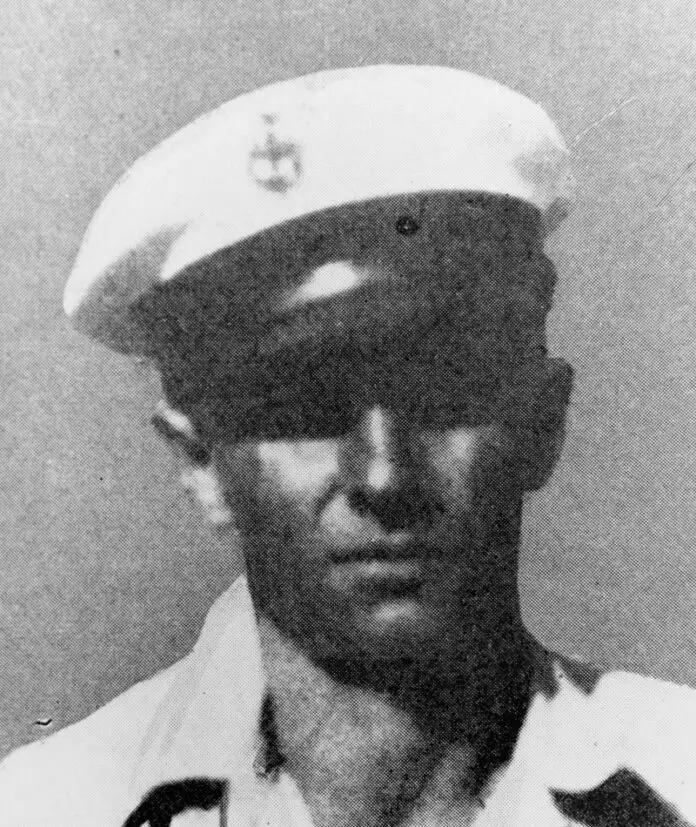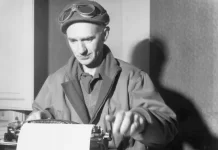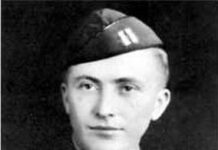Navy Chief Peter Tomich – Medal of Honor Recipient
Although VeniVidiScripto ran a story about Navy Chief Peter Tomich last April, he deserves attention once again. As we approach the anniversary of Pearl Harbor, December 7, 1941, we delve into greater details of this veteran of World Wars I and II and this sailor’s entry into the United States from his native land as well as the search for relatives after he was killed on the USS Iowa.
Besides Rear Admiral Isaac Kidd, the highest-ranking military man to receive the Medal of Honor, there were 15 men who were awarded the Medal for valor in combat on December 7, 1941, where the Japanese attacked Pearl Harbor.
Peter Tomich was one of them. A native of Prolog in the Austro-Hungarian Empire, now Bosnia Herzegovina, Tomich was born in 1893 and immigrated illegally to the United States in 1912. He was 19 years old and lived in Los Angeles with his cousin, John. He died for his country, but there was no family to mourn Peter Tomich, also known as Petar Herceg-Tonic
Tomich joined the US Army shortly after the nation entered World War I and became a naturalized citizen by 1918. He was honorably discharged from the Army in January 1919, and ten days later, joined the US Navy as an engineer. By 1930, the enlisted sailor was a Chief Watertender.
Tomich was serving aboard the USS Utah in Pearl Harbor on December 7, 1941, a battleship, like himself, that was a veteran of the first war. Built in 1909, it had been re-designated as a training and target ship, and was the oldest ship in Pearl Harbor that day. It was the first American ship to be hit by Japanese bombs.
In the opening minutes of the attack 7:55 a.m., the sailors raised the American flag as usual, believing it was a routine day. Five minutes later, when the first bombs fell, the flag on the Utah never made it to the top; it remained at half-mast throughout most of the day.
Tomich was in the fire room where steam is generated for the ship’s engine, when the ship was hit by two torpedoes. Knowing from his 22 years in military service that this would cause an explosion if the hot boilers were in contact with the sea, he ordered the sailors on watch to abandon their engineering space as the ship was capsizing. He ensured that all fireroom personnel had evacuated their stations and remained alone to close the valves to stabilize the boilers. He was trapped inside the room when the ship sank and remained entombed at the bottom of Pearl Harbor.
Because of his actions, Tomich was designated for the Medal of Honor. But there were no living relatives to accept it. The cousin he had identified as next of kin was not at the address given and there was no information about his life in the USA.
With no one to whom it could present the Medal, the Department of Navy decided to name a destroyer escort the USS Peter TOMICH (DE-242) and presented the Medal to the ship itself. The presentation was made on Jan. 4, 1943, by Rear Admiral Monroe Kelly.
When the ship was decommissioned three years later, it was necessary to find another trustee for the Medal of Honor. Since Tomich was entombed in Utah, Utah state Governor Herbert Maw declared him an honorary citizen of the state and the Medal was transferred to the Governor’s Office.
Rear Admiral Mahlon Tisdale, commanding officer of the Navy Base in San Francisco made the presentation to the State of Utah in a ceremony with full military honors in the Rotunda of the Utah state Capitol.
In 1989, the Peter Tomich Hall was built and named at the Senior Enlisted Academy on the Navy installation in Newport, R.I. and the Medal of Honor was transferred there.
The search for family members continued, however. It was learned Tomich was declared legally dead by the Yugoslavian court system, and records of his life in that country were further hampered by the fact he had changed his name to Tonic when he entered the United States illegally. That was his clan name, and he was born Petar Herceg Tonic. Someplace along the way, Tonic evolved into Tomich in the United States.
In 1987, a relative contacted authorities in both countries, and a genealogy search took place. From then through 2005 the search continued until his family roots were finally verified. In 2006, a copy of the Chief’s Medal of Honor was presented to his cousin’s grandson, a retired Croatian Army officer. The presentation was made to LTC Stracke Herceg Tonic aboard the USS Enterprise in Split, Croatia.
Chief Peter Tomich’s Medal of Honor remains in Newport, R.I. A duplicate of the Medal is with the Utah Historical Society, Salt Lake City, Utah, and at the Naval Historical Center, Washington Navy Yard, Washington, D.C.
Since Chief Tomich enlisted in the Navy in New Jersey, the Garden State is credited with his Medal of Honor.
CITATION
For distinguished conduct in the line of his profession, and extraordinary courage and disregard of his own safety, during the attack on the Fleet in Pearl Harbor by the Japanese forces on 7 December 1941. Although realizing that the ship was capsizing as a result of enemy bombing and torpedoing, Tomich remained at his post in the engineering plant of the U.S.S. Utah until he saw that all boilers were secured and all fireroom personnel had left their stations, and by so doing lost his own life.
More stories on those awarded the Medal of Honor from the Great State of New Jersey HERE



